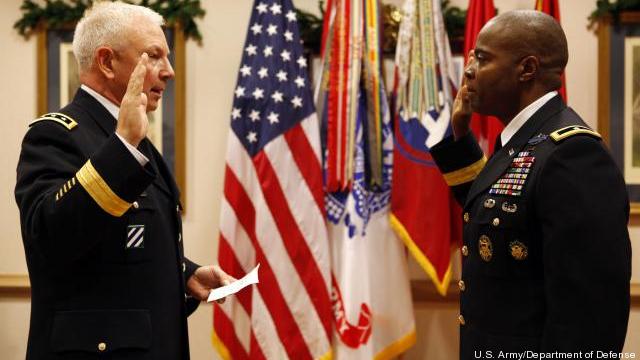How Many Generals Does It Take?
Posted on
 Washington:How does the Pentagon decide how many generals or admirals the services need to lead their forces? The answer coming from top DoD leaders isn’t as clear as some on Capitol Hill would like.
Washington:How does the Pentagon decide how many generals or admirals the services need to lead their forces? The answer coming from top DoD leaders isn’t as clear as some on Capitol Hill would like.
Members of the Senate Armed Services personnel and readiness subcommittee attempted to get some clarity today on that issue, calling in top brass from the Army, Air Force, Navy, Marine Corps and the Joint Staff to help them figure things out.
“This is not intended to be an adversarial hearing,” committee Chairman Sen. Jim Webb said at the outset, adding the panel simply wanted to understand how so many two, three and four-star generals came up through the ranks.
At the beginning of the Afghanistan war, there were 871 general and flag officers in the U.S. military, Ben Freeman, a defense analyst with the Project for Oversight and Government Reform, told the committee yesterday.
By April of this year, that number had jumped to 964, he said. That growth, according to Freeman, “is a burden for both taxpayers and military commanders,” he told the committee.
“Where is it decided and how is it decided that . . . an Air Force of 352,000 people should have 151 brigadier generals?” Webb asked Joint Staff Director Vice Adm. Bill Gortney.
Gortney was part of the study group former Defense Secretary Robert Gates created last August to specifically look at the levels of active duty general and flag officers in the services and see where cuts could be made.
As a result of the group’s findings, DoD opted to reassign or outright eliminate a large number of the military’s top brass.
“We were looking for the efficiencies and go after the growth that was out there,” in the general and flag officer corps, Gortney said of the group’s work today, adding its job was not to define how many senior officers were needed in the services.
To Webb’s question, Gortney replied that congressional limits on number of generals and admirals govern how the services decide which jobs and assignments go to top military brass.
Somewhat unsatisfied with the response, Webb pushed for more.
Explaining that he understood the congressional limits on general and flag officer corps well (Webb was a former Secretary of the Navy), he pressed Gortney again on how the individual services and DoD decide which jobs need a general or an admiral to do?
After a quick pause, Gortney replied: “It’s a fair question, sir.”
Subcommittee ranking member Lindsey Graham circled back to that issue later in the hearing, this time posing the question to the service vice chiefs of the Army, Navy, Marine Corps and Air Force.
“I think the purpose of this hearing is to find out why we pick one [mission] over another and why we are growing so fast,” Graham said. “I just think that some jobs require rank, and some jobs may have been created for general officers, just because that seems to be the trend.”
For their part, the Army leaders look at mission and resourcing requirements, as well as other personnel issues, “go into an analysis” which determines if a general officer assignment is required, according to Army Vice Chief of Staff Gen. Peter Chiarelli.
But when Graham this time pressed Chiarelli, along with Vice Chief of Naval Operations Adm. Mark Ferguson, Assistant Commandant of the Marine Corps Gen. Joseph Dunford and Air Force Vice Chief of Staff Gen. Philip Breedlove on how exactly the services pick the jobs that need a general or admiral, the response was uncomfortable silence.
“If we do not know, the answer is OK that we do not know,” Graham said, in an attempt to lighten the mood.
But with DoD dollars becoming harder and harder to come by, the issue of a presumably top-heavy military will have to be addressed, Freeman said.
“The cost of officers increases markedly with their rank, so taxpayers are overpaying whenever a general or flag officer is in a position that could be filled by a lower ranking officer,” he added.
Subscribe to our newsletter
Promotions, new products and sales. Directly to your inbox.
